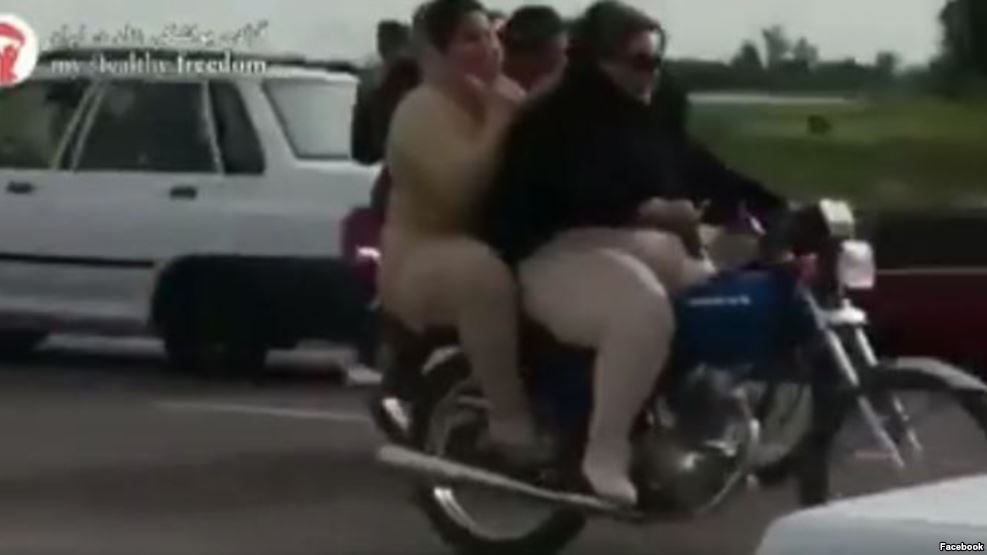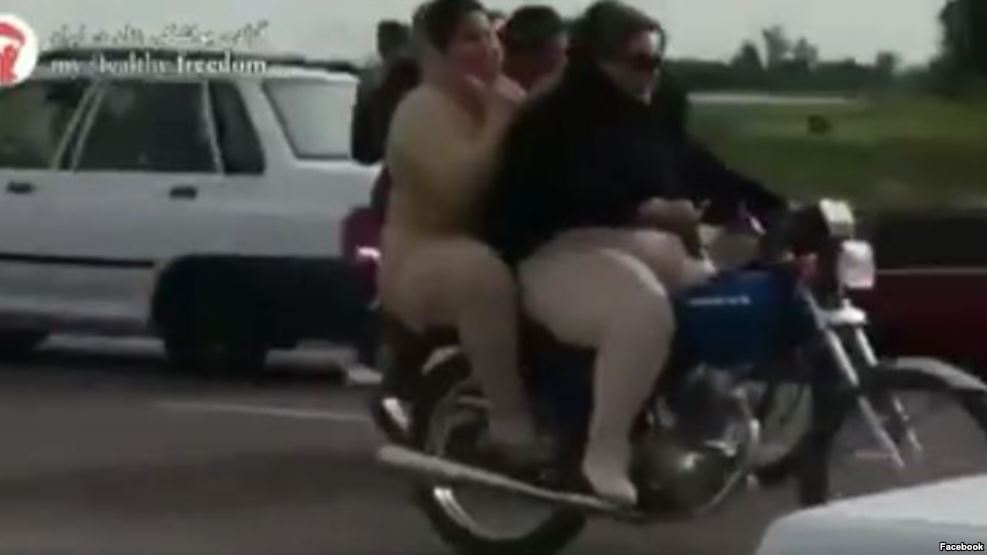
By Heshmat Alavi
Two young women were arrested last week in Dezful, southwest Iran, for riding a motorcycle, according to a report wired by state-run IRNA news agency. As images went viral a social-media backlash was sparked against the ultra-conservative establishment ruling the country. But nothing heard from the so-called “moderate” camp, now symbolled only in Iranian President Hassan Rouhani, orphaned following the sudden death of Ali Akbar Hashemi Rafsanjani, a former president and senior figure in Iranian politics.
The tale of the two young women, when read, resembled a crime report or breaking news about a major security or political development.
“This manifested the utmost denunciation of religious norms by the two girls and caused serious torment and anxiety among city officials,” said local police commander Colonel Ali Elhami. “The state security forces carried out an extensive investigation and finally managed to find, arrest, and deliver them to judiciary officials.”
The charges raised for this arrest has been violating “religious norms” as their adventure was filmed and posted online. Religious extremists in Iran responded by demanding the women be arrested for their dress, appearance and interaction with men seen in the online video images.
This is a regime with an amazingly low tolerance for any social freedoms. Iranian authorities have described this act as “exploiting the opportunity” due to the lack of police in a national park to take part in an “obscene act.” Yet it seems the regime is more concerned about the footage spreading online so quickly, and more individuals seeking to challenge the establishment through such practices.
A woman would not be officially breaking the law in Iran for riding a motorcycle, yet the very extreme interpretation of modesty laws can provide grounds for authorities to punish such acts.
We are talking about a country of strict attire regulations, especially targeting women, whom are obligated to wear headscarves and abide by so-called “modest” clothing. The regime is also known for dispatching undercover agents in the thousands, parallel to so-called “morality police” patrolling the streets hunting for cases of violations.
In the 21st century when hundreds of millions of social media users are communicating like never before, Iran is known for its frequent social media crackdowns. In 2016 a number of women were apprehended for posting images on Instagram and one was humiliated as authorities forced her to publicly apologize on state television.
Iranian women endure discrimination in marriage, divorce, child custody, inheritance and even freedom of movement, according to the 2017 Human Rights Watch world report.
Women and girls are also banned from entering sports stadiums to attend certain events, such as men’s soccer and volleyball matches
Knowing the potential of Iran’s powder keg society, and women capable of spearheading protests across the country, the mullahs have for the past 38 years continuously kept women under harsh crackdown measures.
This goes against any and all arguments of Iran possessing a faction of so-called “moderates” or “reformists,” especially since four years of Rouhani’s tenure rendered no significant improvement in freedoms.
Despite his smiles aimed at fueling the West’s pro-appeasement policy camp, Rouhani’s grim report card shows a horrendous surge to nearly 3,000 executions, unrivaled even by his predecessor, firebrand Mahmoud Ahmadinejad.
The case of these two innocent motorcycling girls further proves the growing intolerance of a regime on the brink of collapse. With Rafsanjani gone, Iranian Supreme Leader Ali Khamenei has lost his balancing factor, and any opening divide in the senior hierarchy will pave the path for 2009-like uprisings that shook the regime’s very foundations.
Interestingly, women lead the main Iranian opposition movement threatening the mullahs’ rule. Mrs. Maryam Rajavi is President of the National Council of Resistance of Iran, an umbrella group including the People’s Mojahedin Organization of Iran (PMOI/MEK). Women play a very significant role in this entity, acting as a role model for women inside Iran.
This is exactly why the mullahs’ regime has no tolerance for the Iranian population to sense any increase in freedoms. With crucial presidential elections only a few months away, Khamenei and his apparatus seek to maintain a tight grip on the un-resting society. Even such simple cases of two young women riding a motorcycle.

Reblogged this on Site Title.
LikeLike